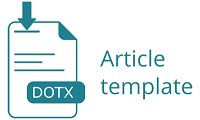Knowledge And Attitude Towards Medication Safety: Study From Religion Based Hospital
DOI:
https://doi.org/10.32807/jkp.v17i1.1143Keywords:
Medication safety, Knowledge, Attitude, HospitalAbstract
The most prevalent patient safety incident in hospitals is medication errors. It is avoidable by a variety of safe treatment approaches known as medical safety. The topic of this research is the high rate of medical errors at 'X' Hospital Tuban in East Java, Indonesia, which accounted for 53.3% of all patient safety occurrences. The goal of this study was to investigate the impact of health workers' knowledge and attitudes on drug safety implementation at 'X' Hospital Tuban. Pharmacists, pharmaceutical technical staff, nurses, and midwives participated in an analytical cross-sectional study with 74 samples. Because of the COVID-19 outbreak, data was collected using an online survey. The survey was based on WHO's 5 Medication Safety Moments. To investigate effect identification, the Fisher's test method was applied. This survey received 87.8% response rate. The following characteristics were shared by the participants: 55.4% are nurses, 75.4% are between the ages of 26 and 36, 86.2% are female, and 36.9% work in an inpatient unit. The average score for medication safety knowledge, attitude, and implementation for each health worker was Good. The correlation coefficient (p = 0.000) between knowledge and drug safety implementation is 0.503. The correlation coefficient (p = 0.000) between attitude and drug safety implementation is 0.508. According to the findings of this study, drug safety knowledge, attitude, and implementation are all satisfactory. Medication safety knowledge and attitudes can aid in the implementation of medication safety. Suggestion for medical professionals, and 'X' Hospital Tuban is working on new pharmaceutical safety precautions.
References
Acheampong, F., Anto, B. P., & Kuffuor, G. A. (2014). Medication safety strategies in hospitals - a systematic review. International Journal of Risk and Safety in Medicine, 26(3), 117–131.
Agyemang, R. E. O., & While, A. (2010). Medication errors: types, causes and impact on nursing practice. British Journal of Nursing, 19(6), 380–385. https://doi.org/10.12968/bjon.2010.19.6.47237
Angelidou, G., Aguaded-RamÃrez, E. M., & RodrÃguez-Sabiote, C. (2019). Design and validation of a scale measuring attitudes toward refugee children. Sustainability (Switzerland), 11(10), 2797. https://doi.org/10.3390/su11102797%0A
Anwar, I., Sinala, S., Adhayanti, N. I., & Dewi, S. T. R. (2022). Review: medication error in prescribing and dispensing phases on outpatient. Galenika Journal of Pharmacy, 8(1), 52–64.
Bayang, A. T., Pasinringi, S., & Sangkala. (2013). Causes factors of medication errors at regional general hospital of Anwar Makkatutu Kabupaten Bantaeng. Universitas Hasanuddin.
Billstein-Leber, M., Carrillo, C. J. D., Cassano, A. T., Moline, K., & Robertson, J. J. (2018). ASHP guidelines on preventing medication errors in hospitals. American Journal of Health-System Pharmacy, 75(19), 1493–1517.
Budihardjo, V. S. (2017). Nurse factors on the incidence of medication errors in inpatient installations. Jurnal Administrasi Kesehatan Indonesia, 5(1), 52–61. https://doi.org/10.20473/jaki.v5i1.2017.52-61
Franke, T. M., Ho, T., & Christie, C. A. (2012). The chi-square test: often used and more often misinterpreted. American Journal of Evaluation, 33(3), 448–458. https://doi.org/10.1177/1098214011426594
Hallit, S., Hajj, A., Shuhaiber, P., Iskandar, K., Ramia, E., Sacre, H., & Salameh, P. (2019). Medication safety knowledge, attitude, and practice among hospital pharmacists in Lebanon. Journal of Evaluation in Clinical Practice, 25(2), 323–339. https://doi.org/10.1111/jep.13082
Indonesian Minister of Health Decree. (2019). Permenkes No. 4 Tahun 2019.
Jotterand, F., Amodio, A., & Elger, B. S. (2016). Patient education as empowerment and self-rebiasing. Medicine, Health Care and Philosophy, 19(4), 553–561. https://doi.org/10.1007/s11019-016-9702-9
Khalil, H., & Lee, S. (2018). The implementation of a successful medication safety program in a primary care. Journal of Evaluation in Clinical Practice, 24(2), 403–407. https://doi.org/10.1111/jep.12870
Lemeshow, S., Jr, D. W. H., Klar, J., & Lwanga, S. K. (1990). Adequacy of sample size in health studies. World Health Organization.
Mahajan, R. P. (2011). Medication errors: can we prevent them? British Journal, 107(1), 3–5. https://doi.org/10.1093/bja/aer131
Manias, E., Kusljic, S., & Wu, A. (2020). Interventions to reduce medication errors in adult medical and surgical settings: a systematic review. Therapeutic Advances in Drug Safety, 11.
Rixon, S., Braaf, S., Williams, A., Liew, D., & Manias, E. (2015). Pharmacists’ interprofessional communication about medications in specialty hospital settings. Health Communication, 30(11), 1065–1075.
Samaranayake, N., & Cheung, B. (2013). Medication safety in hospitals: avoiding medication errors in the medication use process. advances in pharmacoepidemiology and drug safety. Advances in Pharmacoepidemiology and Drug Safety, 02(03).
Sassoli, M., & Day, G. (2017). Understanding pharmacist communication and medication errors: a systematic literature review. Asia-Pacific Journal of Health Management, 12(1), 47–61. https://doi.org/10.24083/apjhm.v12i1.105
Schwappach, D. L. B., & Wernli, M. (2010). Medication errors in chemotherapy: incidence, types and involvement of patients in prevention. A review of the literature. European Journal of Cancer Care, 19(3), 285–292.
Shahrokhi, A., Ebrahimpour, F., & Ghodousi, A. (2013). Factors effective on medication errors: a nursing view. Journal of Research in Pharmacy Practice, 2(1), 18–23.
Shitu, Z., Hassan, I., Aung, M. M. T., Kamaruzaman, T. H. T., & Musa, R. M. (2018). Avoiding medication errors through effective communication in healthcare environment. Movement, Health & Exercise, 7(1), 113–126.
Surji, K. (2018). Assessment of safe medication administration practice at a public hospital in Erbil City, Iraq. Zanco Journal of Medical Sciences, 22(3), 323–331. https://doi.org/10.15218/zjms.2018.042
Vilela, R. P. B., & Jericó, M. de C. (2015). Medication errors: management of the medication error indicator toward a more safety nursing practice error. Journal of Nursing UFPE On Line, 10(1), 119–127.
Waaseth, M., Ademi, A., Fredheim, M., Antonsen, M. A., Brox, N. M. B., & Lehnbom, E. C. (2019). Medication errors and safety culture in a Norwegian Hospital. Studies in Health Technology and Informatics, 265, 107–112.
Wan, T. T. H., Rav-Marathe, K., & Marathe, S. (2016). A systematic review on the KAP-O framework for diabetes education and research. Medical Research Archives, 3(9), 1–21.
WHO. (2019). 5 Moments of Medication Safety. https://apps.who.int/iris/bitstream/handle/10665/311157/WHO-HIS-SDS-2019.3-eng.pdf?ua=1




